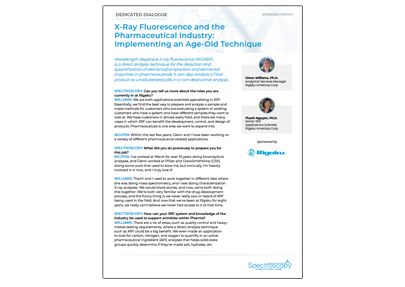X-Ray Fluorescence and the Pharmaceutical Industry: Implementing an Age-Old Technique
Wavelength-dispersive X-ray fluorescence (WDXRF) has for decades been widely implemented in quality control for many industries including, steel and alloy production, cement, plastics, glass, food, oil exploration and refining. It has been shown to be a highly stable, simple to operate, and reliable technique. In this podcast we will discuss the use of WDXRF, a direct analysis technique for the detection and quantification of elements/composition and elemental impurities in pharmaceuticals. On-going testing among various pharmaceutical companies has shown that it can be used to demonstrate compliance with regulations, such as ICH-Q3D and USP 232/233. However, this technique has not been fully exploited within this industry. Furthermore, we will discuss the ability to analyze final product as unadulterated pills in a non-destructive analysis.
New Study Reveals Insights into Phenol’s Behavior in Ice
April 16th 2025A new study published in Spectrochimica Acta Part A by Dominik Heger and colleagues at Masaryk University reveals that phenol's photophysical properties change significantly when frozen, potentially enabling its breakdown by sunlight in icy environments.
